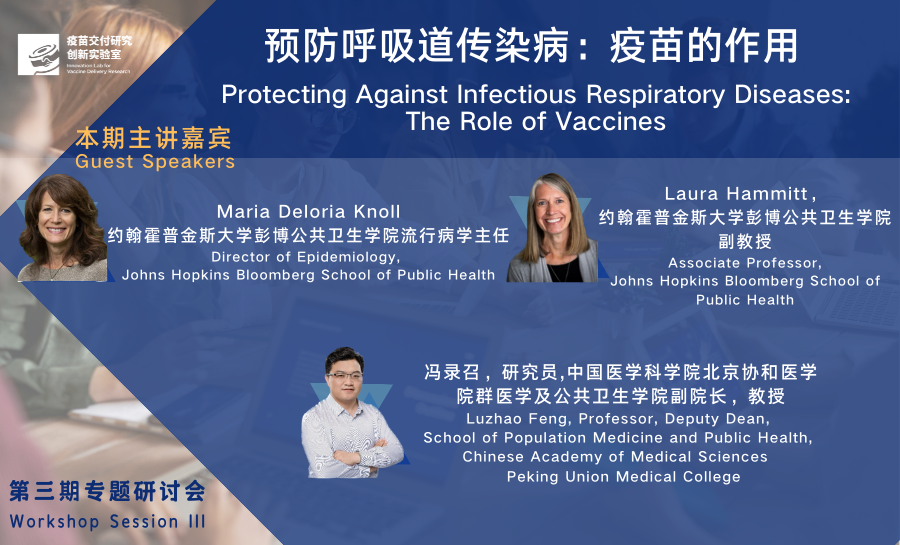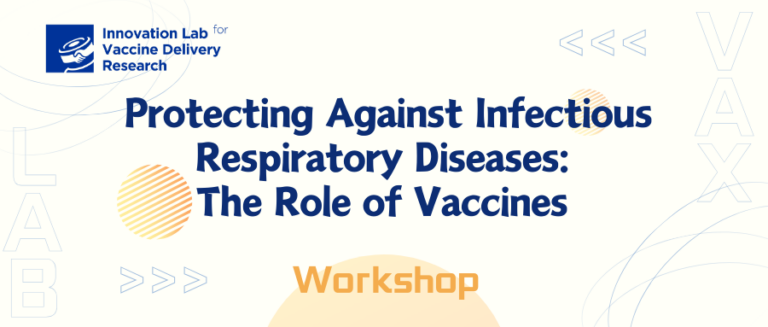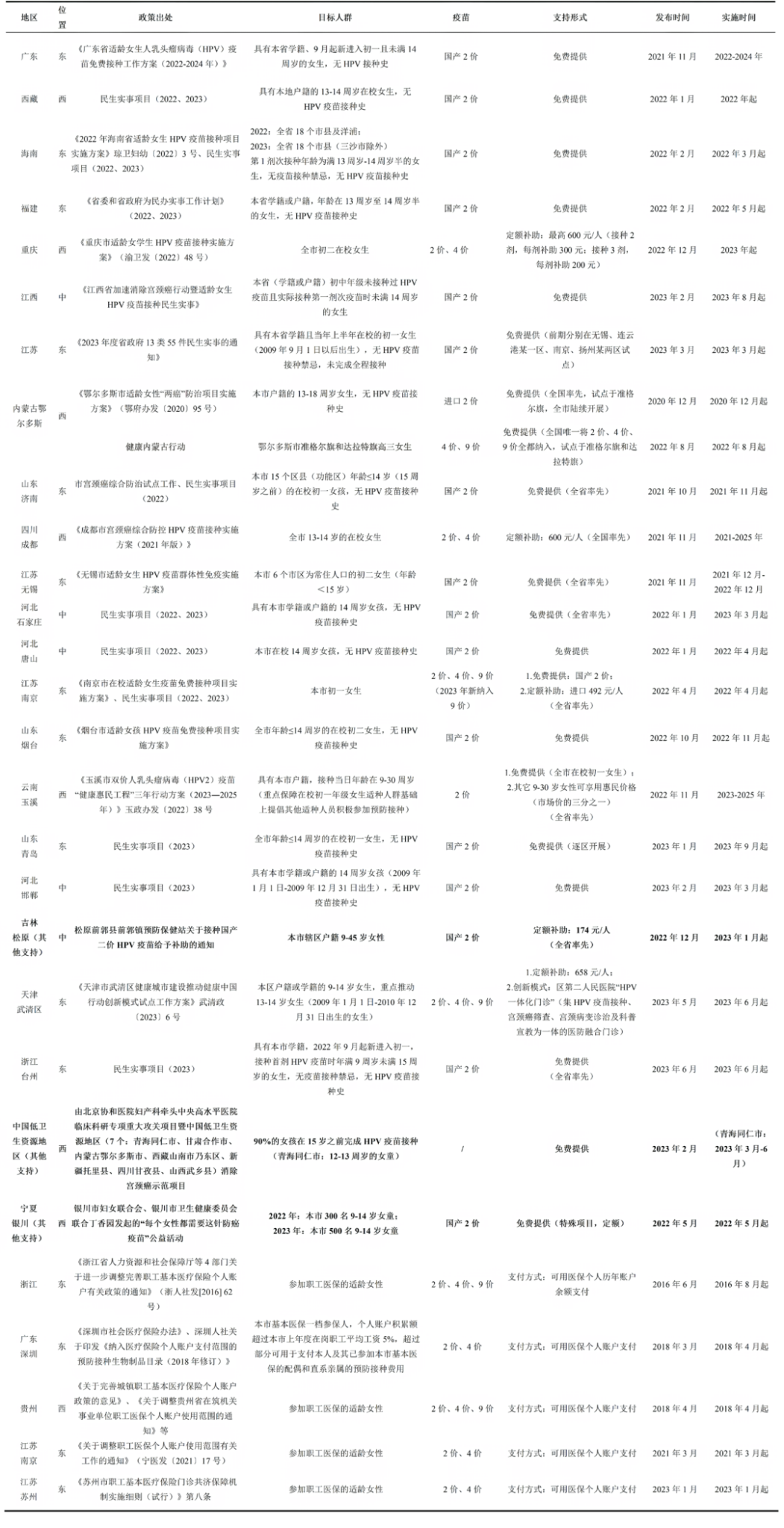Start Time
End Time
Location
To register for this event email your details to vaxlab@dukekunshan.edu.cn
Event Detail

Respiratory infectious diseases are mainly caused by pathogens invading the patient’s body through the nasal cavity, trachea, pharynx, bronchi, etc. The pathogens include various bacteria, viruses, mycoplasma and chlamydia, which are mainly transmitted through the air, droplets and physical contact. Respiratory infectious diseases spread quickly and are difficult to prevent and control. Serious respiratory infectious diseases, such as the Spanish flu, SARS, Middle East Respiratory Syndrome, and the recent outbreak of the novel coronavirus, have had a great impact on economic and social development. Therefore, prevention and control of respiratory infectious diseases has been receiving more and more attention from the whole society.
On the morning of February 16th, with the strong support of the Bill & Melinda Gates Foundation and many other partners, the technical workshop “Protecting Against Infectious Respiratory Diseases: The Role of Vaccines” hosted by the Innovation Lab for Vaccine Delivery Research (VaxLab) was successfully concluded.
This workshop invited Professor Maria Deloria Knoll, Director of Epidemiology at the International Vaccine Access Center (IVAC), Johns Hopkins Bloomberg School of Public Health, Professor Laura Hammitt, Director of the Infectious Disease Program at the Center for Indigenous Health (CIH), Johns Hopkins Bloomberg School of Public Health, and Professor Luzhao Feng, Deputy Dean of School of Population Medicine and Public Health, Chinese Academy of Medical Sciences & Peking Union Medical College as three guest speakers to share and discuss the role of vaccines in preventing respiratory infectious diseases. The three speakers respectively presented on Global Review of PCV Use in Childhood Immunization Programs and its Impact, RSV Burden and Prevention Products, and Insights into Behavior and Social Drivers during Influenza Vaccination Promotion, respectively.
Maria Deloria Knoll, Director of Epidemiology at the International Vaccine Access Center (IVAC), Johns Hopkins Bloomberg School of Public Health gave a systematic introduction on ” Global Review of PCV Use in Childhood Immunization Programs and its Impact”.
Lecture Recap:
Pneumococcus causes severe disease and death in all ages, and invasive pneumococcal diseases (IPD) that are detectable in clinical settings are only part of this disease spectrum. Pneumococcal conjugate vaccines (PCV) have been available since 2000. Currently,168countries have introduced 10- and 13-valent PCVs into national immunization programs and 15 countries have plans to introduce PCVs, leaving only 11 countries behind worldwide that have not yet made a decision.
All pneumococcal conjugate vaccines are safe and effective, and the “2+1” dose or “3+1” dose provides the best protection. Immunization schedules vary slightly from country to country, and it is worth noting that the UK has recently started using the “1+1″(one priming and one booster dose) immunization schedule, which was adjusted based on evidence of population immunity, reduction of virus carriage, etc.
The increase of vaccine coverage can greatly reduce the incidence of invasive pneumococcal disease. A study in 2021 showed that in England since the implementation of pneumococcal vaccine in 2000, the net decline in all invasive pneumococcal disease among children under the age of two was 68% by 2018. A systematic review published last year by the International Symposium on Pneumococci and Pneumococcal Diseases (ISPPD) showed that after the introduction of PCV10/13, the incidence of invasive pneumococcal disease among children under five years old decreased by 58-74%; In USA, more numbers of hospitalizations were prevented in adults >18y than that in children under five years old. It also provides indirect herd protection in all ages including older adults.
Laura Hammitt, Associate Professor, Director of the Infectious Disease Program at the Center for Indigenous Health (CIH), Johns Hopkins Bloomberg School of Public Health shared the topic “RSV Burden and Prevention Products”.
Lecture Recap:
Respiratory syncytial virus (RSV) is a common respiratory virus that is spread by respiratory droplets. People are typically infected with RSV for the first time in infancy and nearly all children are infected before their second birthday. RSV has the characteristic of seasonal transmission, with higher incidence in temperate regions in winter, and in regions with high temperatures and humidity. RSV usually causes a mild cold-like symptoms such as runny nose and cough. However, RSV can cause more serious consequences such as bronchiolitis (inflammation of the small airways in the lung) and pneumonia.
RSV generally causes mild cold-like symptoms but can also lead to severe infection in some vulnerable groups, including preterm infants, elderly, people with heart and lung diseases, and other immunocompromised individuals, with a mortality rate that cannot be ignored. A study published in The Lancet in 2019 showed that 9.7% of severe pneumonia cases in children under six years of age tested positive for RSV virus. A study published in Clinical Infectious Diseases in 2021 showed that 93% of RSV-associated lower respiratory tract infection deaths in children under two years old in India occurred in the community. In the US, RSV has a significant disease burden in adults over 65 and children below five years old.
The prevention and control of RSV is mainly divided into two strategies: active immunity (using monoclonal antibodies) and passive immunity (vaccination). Current pipelines include RSV vaccine developed by Pfizer for pregnant women, which has entered Phase III clinical trials. The mid-term evaluation results showed that the vaccine had an efficacy of 81.8%(95% confidence interval 40.6 to 96.3) for severe disease prevention within 90 days, and 69.4%(95% confidence interval 44.3 to 84.1) for 6-month protection.
Laura introduced three monoclonal antibodies currently on clinical trials, Nirsevimab, Clesrovimab and Palivizumab, designed for different targets. Among them, Nirsevimab monoclonal antibody is the first one that can provide continuous protection for all infants during the respiratory syncytial virus (RSV) season with only one dose injection. Based on Phase III trial results, the efficacy of single dosage Nirsevimab to protect infants from lower respiratory tract infection (such as bronchiolitis or pneumonia) caused by RSV requiring hospital visits reached 74.5%. In full-term infants and preterm infants (gestational age greater than 28 weeks), Nirsevimab reduced the occurrence of RSV-related hospitalization with an efficacy of 77.3% under the recommended dosage. All the above results were statistically significant.

Luzhao Feng, Professor and Deputy Dean of School of Population Medicine and Public Health, Chinese Academy of Medical Sciences & Peking Union Medical College, made a presentation ” Insights into Behavior and Social Drivers during Influenza Vaccination Promotion “.
Lecture Recap:
Content review: the World Health Organization (WHO) issued a position paper which dedicated in understanding the behavioral and social drivers of vaccine uptake in May 2022, calling for attention to the behavior and social drivers of vaccine uptake, encouraging the combination and integration of influenza with other diseases for monitoring and prevention control, encouraging member states to conduct influenza vaccination actions on a conditional basis, and incorporating influenza vaccines into national or local immunization plans.
The current situation of influenza vaccination in our country is not optimistic. During the two influenza seasons during the COVID-19 pandemic, the influenza vaccination rate in the general population was only 2%-3%. Research has found that during 2019,2020, and 2021 influenza seasons, the influenza vaccination rate of medical personnel has been continuously declining. Based on the analysis of WHO’s “3C” model of vaccine hesitancy, it was found that medical personnel had higher requirements for the convenience and free vaccination of vaccines due to their busy work, and it was also found that medical personnel lacked attention to influenza and thought that influenza would not seriously affect their health. Compared with clinical doctors, personnel in public health institutions have a higher acceptance of influenza vaccines, with 52.5% of public health workers vaccinated in the 2021-2022 season.
Government policies advocate the importance of vaccination for influenza. For example, in Zhejiang Province, the vaccination of people aged 70 and above was made a people’s livelihood project, and the coverage of influenza vaccination was significantly increased. Secondly, effective communication plays a positive role in the scientific dissemination of vaccines, knowledge acquisition, and increasing vaccination rates. In addition, measures such as increasing the convenience of vaccination services, enterprises paying for vaccine costs, and innovating vaccine models can also promote the improvement of vaccine coverage.






